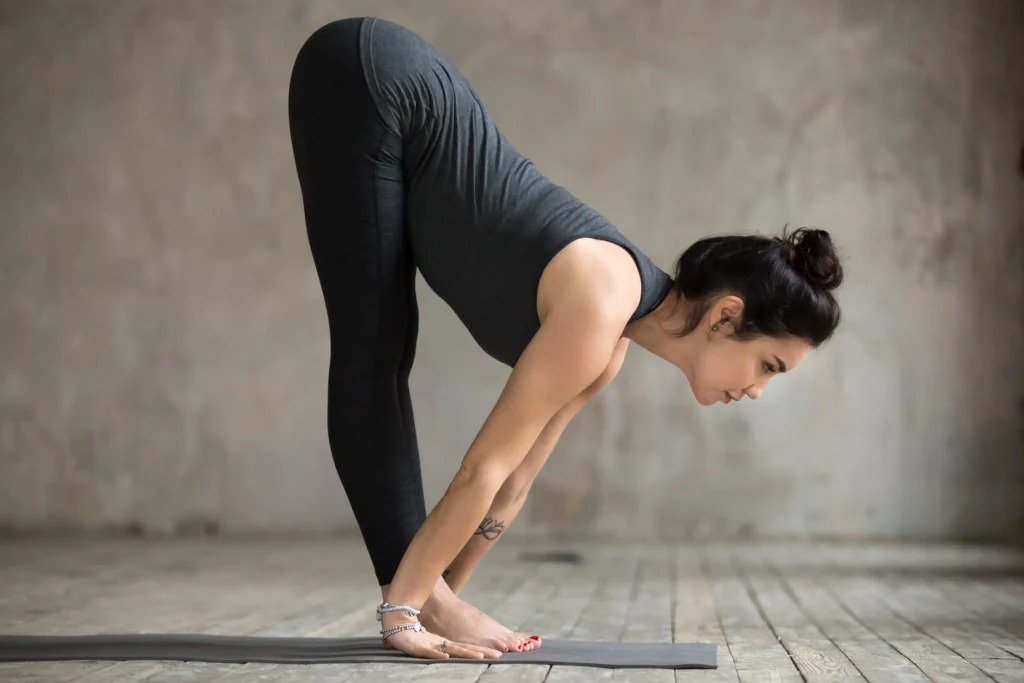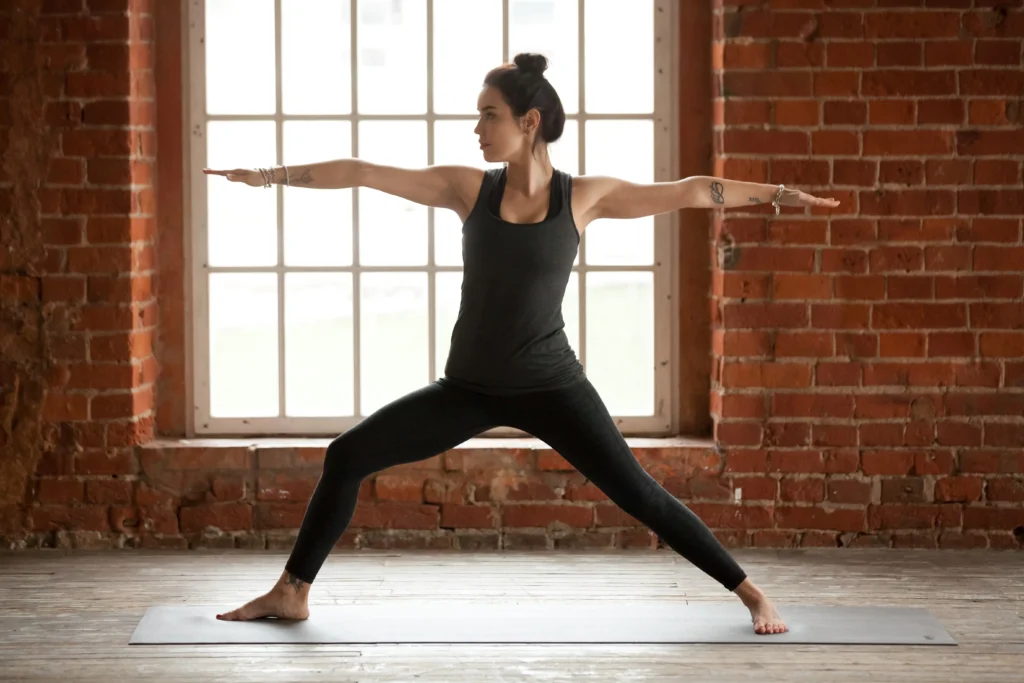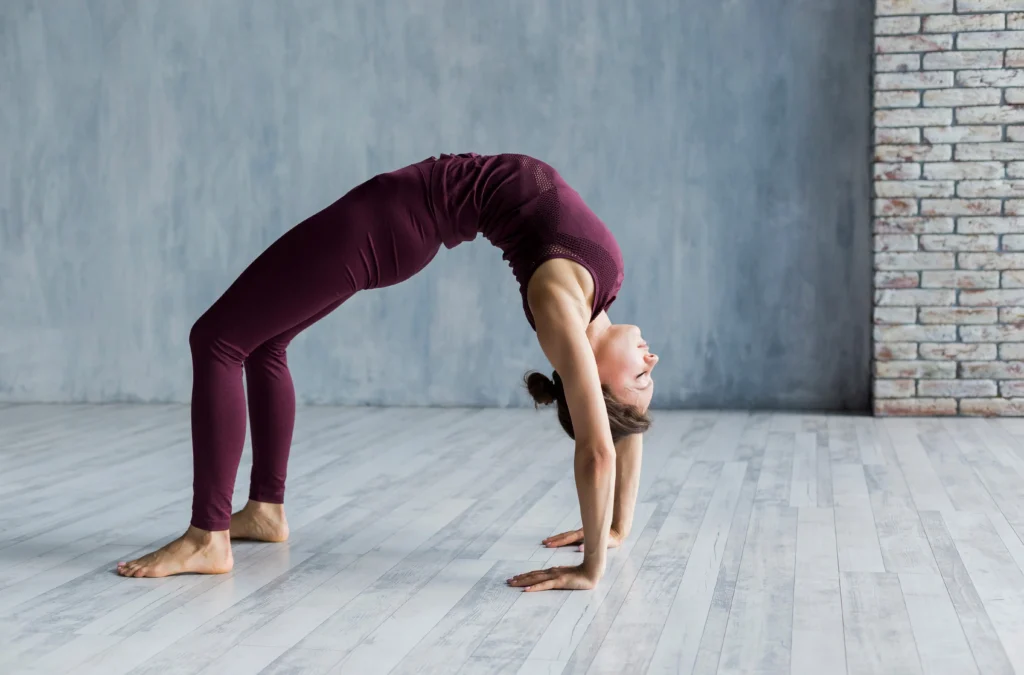Flexibility with Yoga
Whether you are an athlete, a fitness lover, or merely want to be more mobile and peaceful, yoga for flexibility offers a myriad of advantages to enhance overall mobility. By the implementation of specific postures, you can stretch and lengthen muscles, reduce stiffness, and have better movement so that you can do everything better. This guide includes must-do rounds of Yoga Flexibility which come with complementary practices for both Yoga and flexibility, as well as the use of the Retrospec Solana Yoga Mat will make your practice easier.
Disclosure: This article contain affiliate link. By buying through our link, We will gain a little commission with no other expenses to you. Learn more about our affiliate policy.
Table of Contents
Why Flexibility Matters and How Yoga Helps
Flexibility of the body is very essential if we want to have good physical health, and it helps us to have a better posture, more mobility, and less chance of injuries. Yoga for Flexibility require exercises that work at stretching, toning, and breathing mindfully all of which contribute to the targeted strength drain. However, after some period of time of constant exercises, you will move with more liberty as the techniques will improve your balance, position, and walk. Also, thereby, you will be more flexible through life. Yoga is also good for your brain. It helps you to concentrate and relax making it a super fit for the body and mind.
To those who are aiming to have a great overall fitness plan, it might be a good idea to add complementary as well as weight exercises to your routine like Cardio Exercises at Home: Your Ultimate Guide to Boosting Fitness.
Best Yoga Poses for Flexibility
The use of flexibility-oriented postures in a yoga session can bring out remarkable results. The following are some of the primary poses to stretch different muscle groups, increase mobility, and release tension:

Hamstrings and Lower Back
- Forward Fold (Uttanasana): This is a very simple yet highly effective exercise that will work the hamstrings and lower back. Stand with your feet together, flex at the hips, and attempt to get as close to the floor as you can, on to your seat bones or your ankles. Rotate your spinal column upwards as you do, sensing the pull in your hamstrings and lower back.
- Downward-Facing Dog (Adho Mukha Svanasana): Start in a plank position, lift your hips up to form an inverted “V” shape and press your heels down to the floor. This pose opens the hamstrings, calves, and spine while at the same time reducing low back pain.
Pro Tip: If you have a bad sleep posture which results in stiff muscles, do these poses to help release the muscle. You can also find out more from our guide on written by: Struggling with Neck Pain from Sleeping Wrong? Here’s How to Fix It.
Hips and Legs
- Pigeon Pose (Kapotasana): Drop your knee and place your shin on the mat from Downward Dog. Extend the other leg back and drop your hips to the mat. Deep into your body stands the pigeon pose which fully elongates the hip flexors, glutes, and the lower back.
- Warrior II (Virabhadrasana II): Stand with your feet apart and bend one knee while also extending your arms to the sides. This strong position helps you to relieve hip stress, gain leg muscle strength, and stretch the inner thighs.

Lots of people relate to the fact that they have to work out in a high-intensity environment. Area my go-to yoga poses for flexibility exercises for ideas that can be modified for a workout that includes yoga.
Upper Body and Shoulders
- Puppy Pose (Uttana Shishosana): Starting on all fours, lengthen the reach of your arms in front of you, and let your chest fall toward the floor. This effortless move will help you to actively reduce the shoulder and upper back tension, two trouble areas for those who suffer from shoulder tension.
- Pair-legged Lotus (Sukhasana): Get seated, place your legs one above the other, and reach your hands apart from your back, interlocking your fingers. This pose mainly enhances the movement of the shoulders, upper back, and chest.
The upper-body drills such as those talked about in this text are of the best body movement improving ranges of motion. To build shoulder and back muscle, exercises that help with resistance bands will do it; read on How Resistance Bands Can Enhance Your Fitness Routine for exercises that support shoulder and back strength.
Spinal Flexibility and Core Strength
- Cat-Cow Pose (Marjaryasana-Bitilasana): Moving through Cat and Cow stretches makes your spine supple, improves your agility and takes away the numbness in your back. Inhale as you arch your back (Cow), and exhale as you round your back (Cat).
- Bridge Pose (Setu Bandhasana): Lay flat on your back, bend your knees, elevate your hips slightly along with the chest and spine stretching. The Bridge Pose not only strengthens glutes, abs, and low back but also at the same time causes spinal flexibility.

You can also improve your mobility by introducing these poses into your routine. Here’s the link to a more detailed fitness routine of that Effective Calisthenics Workout Routines for Everyone.
Developing a Consistent Yoga Routine for Flexibility
Yoga for Flexibility is definitely a key factor in the entire stretching process, and the consistent act of stretching has proved to be the most the best way to a stretchy body. If you want to see a change the fastest, just include in your daily or weekly exercise a program consisting of stretching exercises, each repeated 3 sets for 30 seconds to 1 minute. Here’s an example routine to get you started:
- Make a few circles doing Cat-Cow Pose to wake your back up and unwind it.
- Dive into Downward-Facing Dog for a complete stretch of all the muscles.
- Adjust to the well-known Pigeon Pose to experiment with the most powerful hip opener Poses.
- Use Warrior II on both sides to both strengthen and open the hips.
- End with Bridge Pose to do a spine stretch and a core exercise.
The Retrospec Solana 1-Inch Yoga Mat: Enhancing Your Flexibility Practice
Flexibility is the key to the right flexible routine. The Retrospec Solana 1-Inch Yoga Mat, as it were, absorbs the weight, thus, it is the most comfortable and stable option, which assists you to maintain your balance and concentration on the poses. What makes it an advantageous option in a yoga for flexibility routine are listed below :
- Additional Comfort: This mat has a 1-inch thickness so your joints are suitably upheld thus, the tension points during poses such as Pigeon and Bridge are decreased.
- Non-Slip Grip: The mat’s non-slip coating ensures it won’t slide away and you can concentrate on your training without the risk of injury.
- Guaranteed to Last: The Retrospec Solana mat mat is designed for residential use, it is compact and comes with a band, it allows you to carry it to classes easily or place it in another room in your house.
- Eco-Friendly Materials: Say goodbye to toxic materials and the discomfort of a rubber mat temporarily slipping away as you work out!

This can be a essential part of your yoga equipment, allowing you to explore demanding poses with confidence by using it.
Get Your Yoga Mat Today!
Tips for Success and Safe Progression in Flexibility
When it comes to yoga and flexibility, one of the most important things to remember is that practice must be gradual. Yoga is a path of self-discovery with flexible moves that come over time and only if you practice every day. Helpful Tips to Keep You on Track:
- Always Start Soft Poses: If you are a beginner, be gentle to your body, don’t pull too hard on muscles to get deeper stretches at this stage. Forward Fold or Child’s Pose are good examples of basic poses you can try for flexibility training.
- Means of Action: Using props such as a secure bolster or folded blankets can help you modify the poses, regardless of whether or not your flexibility is compromised, by which you can gradually move on your body deeper and deeper into relaxed phase without overstraining the muscles.
- Pay Attention to Breathing: Taking deep breaths in each pose promotes the release of muscle tension and amplifies the circulation of oxygen that further helps flexibility workouts to be more successful.
Complementary Practices for a Flexible and Balanced Body
Even though yoga in itself can do wonders for flexibility, adding yoga to other workouts will bring about extra advantages. Strength workouts, cardio, and calisthenics are good examples of exercises that help to make the entire body more flexible by making the muscles all the more balanced.
Make yoga a part of a wider fitness regime so you can feel the entire body changing with your new flexibility. Our guide on Ultimate Guide on How to Get Better Sleep has details of relaxation ideas that blend well with flexibility yoga particularly for nighttime relaxation.
Final Thoughts on Yoga for Flexibility
Engaging in yoga in building flexibility is a continuous process, which in the long run shall give you health benefits that are not limited to physical fitness. A consistent routine, a proper yoga mat, and the willingness to keep practicing make it possible for you to view improvements in your flexibility and relief from discomfort in day-to-day actions.
Be sure to also go for the Retrospec Solana 1-Inch Yoga Mat for both comfort and durability. Start this journey of flexibility, balance, and strength in your physical body and feel yoga setting you free of the mentalmaze at the same time.
FAQ’s
How many times a week should I do yoga for flexibility?
Most individuals will notice substantial improvement by doing yoga for flexibility around 2-3 days per week. You can nonetheless change the frequency in response to how your body reacts and what you aim for.
How long does it take for yoga to improve flexibility?
As you keep on practicing regularly, chances are you will observe that your flexibility has improved in approximately 4-6 weeks-although the duration can vary, being dependent on factors like individual fitness levels and how intensely you are practicing your yoga routine.
How long to hold yoga poses for flexibility?
It allows the muscles to get loose and stretch properly if you hold the poses for about 30 seconds to 1 minute. You can even try increasing the length of pose holding to around 1-2 minutes for more flexibility.
Why is yoga good for flexibility?
Yoga primarily includes stretching, holding of breath through postures, which then increases the length and strength of the muscles, the joint movement, and subsequently, the flexibility.
How to increase flexibility for yoga?
To help enable flexibility for yoga, yoga should be practiced regularly, warming up should be done before the deeper stretches, and props or changes should be used when necessaries to create safe and effective stretches.
How often to do yoga for flexibility?
Trying yoga between 2 to 4 times a week would be an ideal achievement for flexibility, so that the muscles have time to repair and acclimatize.
How long for yoga to increase flexibility?
Flexibility scenarios vary, but you can often see changes of 4-6 weeks if you regularly do yoga, and one key factor will be your initial level of flexibility.
How to get flexibility for yoga?
Though one can aim to reach the point where they can finish a sequence through the pattern which is particularly challenging the person’s flexibility, namely forward folds and lunges. Enjoying props and practicing deep breathing during the practice can also be very rewarding in gaining flexibility.
Which is better for flexibility: yoga or Pilates?
Yoga and Pilates may improve flexibility, but yoga is more about long squeezes and freshening with the deeper stretches which are more productive in flexibility training.
How good is yoga for flexibility?
By using the breathing, stretching and mindfulness that yoga offers us, we make ourselves able to release muscle tension, Muscular flexibility, and Loose Muscle Fibres that helps the muscle to stretch and make it more mobile and flexible.
How to start yoga for flexibility?
At the start of the practice of yoga for flexibility, choose beginner-friendly positions such as Cat-Cow, Child’s Pose, gentle forward folds, and then moving on to more difficult stretches as you advance.
Which kind of yoga focuses on slow stretching for the sake of flexibility?
Yin yoga is about deep relaxation and releasing holding patterns, and it is a yoga style that focuses on the releasing of the various forces of tension in the body that is accomplished mainly through gentle breathing and clearing of the mind.
What type of yoga is best for flexibility?
Hatha yoga and Yin yoga are usually the most beneficial ones to improve flexibility with, as they encompass more relaxed, elongated stretches which are held longer, and are ideal for flexibility exercises.
How to sit for yoga when there’s no hip flexibility?
If you are short of flexibility, the best idea to get there is to sit on yoga block or cushion to lift the hips that will lessen the tension and avoid discomfort while sitting practice.


3 comments
Comments are closed.